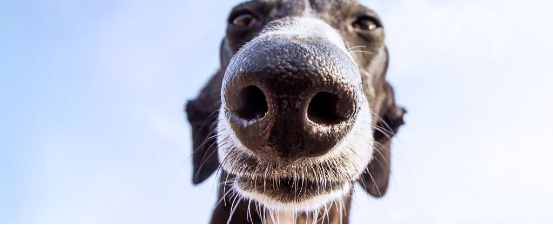
Dogs experience the world in a way that’s very different from humans. While we use our eyes to see, dogs rely on their amazing sense of smell. Scientists have long wanted to know: How do dogs understand the scents around them? A new study gives us some answers.
1.1. How do dogs mainly explore the world?
A Through sight.
B Through smell.
C Through hearing.
D Through touch.
解析:选B。B 细节理解题。根据第一段的“While we use our eyes to see, dogs rely on their amazing sense of smell”可知,狗狗主要依靠嗅觉探索世界。故选B。
2.2. Why are dogs’ noses so powerful?
A They have few smell sensors.
B They like gasoline.
C They can see well.
D They have many smell sensors.
解析:选D。D 细节理解题。根据第二段的“An average dog has 125-300 million smell sensors in its nose.”可知,狗狗嗅觉发达是因为狗的鼻子里有1.25亿到3亿个嗅觉受体。故选D。
3.3. What was the problem with old dog-brain study methods?
A Dogs needed to keep moving.
B Dogs’ job performance got better.
C Dogs had to remain still.
D Dogs could rest as they liked.
解析:选C。C 细节理解题。根据第三段的“Old methods used expensive machines and made dogs sit still”可知,传统的研究狗的大脑的方法是让狗保持静止,不适合活泼好动的狗,这是该方法存在的问题。故选C。
4.4. What did AI do in the new dog-brain study?
A It controlled the green laser.
B It recorded brain activity.
C It analyzed brain reaction patterns.
D It selected the test scents.
解析:选C。C 细节理解题。根据第四段的“AI analyzed the patterns to see how their brains reacted.”可知,AI用于分析狗的大脑的反应模式。故选C。
5.5. What does the author give the example of dogs disliking the vet’s office in Paragraph 5?
A To prove that scents can affect dogs’ feelings.
B To show that vets’ offices are not friendly to dogs.
C To tell us many dogs around us are afraid of vets.
D To suggest ways to make dogs like vets’ offices.
解析:选A。A 推理判断题。根据第五段的“This means scents can make dogs happy or sad.”可知,作者举狗不喜欢兽医诊所的例子,是为了证明气味能影响狗的情绪。故选A。